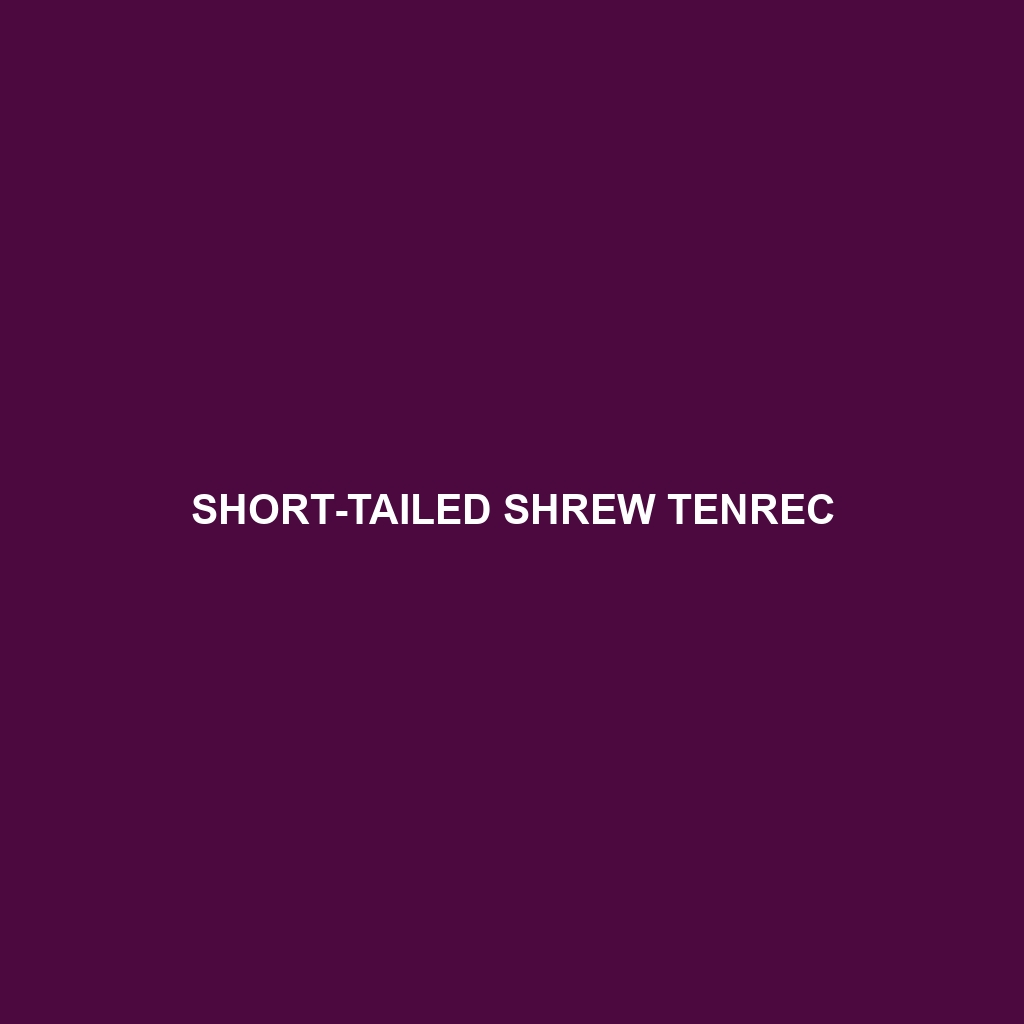Short-tailed Shrew Tenrec: A Comprehensive Overview
The Short-tailed Shrew Tenrec (Microgale brevicaudata) is a lesser-known but fascinating mammal native to Madagascar. Known for their small size and shrew-like appearance, these tenrecs are an intriguing subject for wildlife enthusiasts and researchers alike. As part of the diverse tenrec family, they exhibit unique characteristics and behaviors that make them a captivating study.
Physical Characteristics
Size and Weight:
Short-tailed Shrew Tenrecs are relatively small mammals, with an average body length of 10-12 cm (4-5 inches) and a tail length of just 2-3 cm (0.8-1.2 inches). They typically weigh between 15-25 grams (0.5-0.9 ounces).
Coloration:
Their fur is generally dark brown or black, blending seamlessly with the forest floor’s leaf litter. The fur is dense and velvety, providing excellent insulation.
Special Features:
These tenrecs have a distinctive short tail, as their name suggests, which differentiates them from other members of the tenrec family. Their snouts are elongated and pointed, aiding in their insectivorous diet. They possess small, beady eyes and ears, which are not very prominent.
Behaviors
Social Interactions:
Short-tailed Shrew Tenrecs are primarily solitary creatures. They are nocturnal, meaning they are most active during the night. The limited interactions they have with other tenrecs are mostly related to mating.
Feeding Habits:
These tenrecs are insectivores, feeding mainly on insects, worms, and other small invertebrates. Their keen sense of smell and sharp, pointed snouts help them forage for food in the leaf litter and soil. Occasionally, they might also consume small vertebrates or plant matter.
Ecological Roles:
As insectivores, Short-tailed Shrew Tenrecs play a crucial role in controlling insect populations. They also contribute to soil aeration through their digging and foraging activities.
Habitat and Adaptations
Habitats:
The Short-tailed Shrew Tenrec is native to the rainforests of Madagascar. They prefer moist, dense forest environments where they can easily find food and shelter.
Adaptations:
Their dense fur provides insulation against the cool, damp conditions of the forest floor. Their nocturnal habits help them avoid many predators and reduce competition for food. The structure of their feet and claws is adapted for digging, allowing them to burrow and forage effectively.
Conservation Status
The conservation status of the Short-tailed Shrew Tenrec is currently listed as “Least Concern” by the IUCN Red List. However, habitat destruction due to deforestation and human encroachment poses a potential threat to their populations. Conservation efforts focused on preserving Madagascar’s rainforests are crucial for their continued survival.
Fun Facts
1. Unique Communication: Though primarily solitary, Short-tailed Shrew Tenrecs use a variety of vocalizations and scent markings to communicate, especially during the breeding season.
2. Versatile Diet: While mainly insectivorous, their diet can be quite versatile, adapting to the availability of food sources in their environment.
3. Ancient Lineage: Tenrecs, including the Short-tailed Shrew Tenrec, are part of an ancient lineage of mammals that have evolved unique traits over millions of years.
The Short-tailed Shrew Tenrec may not be as well-known as some other mammals, but its unique characteristics and vital ecological role make it an important species to understand and protect. By learning more about these fascinating creatures, we can better appreciate the incredible biodiversity of Madagascar and the importance of conservation efforts.
